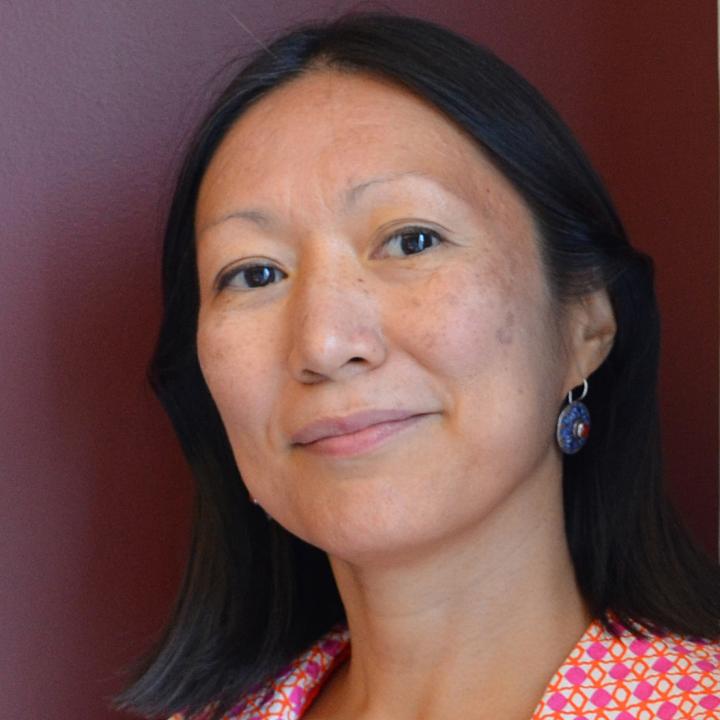In 1939 over one hundred and sixty thousand workers built the Great Fergana Canal in just 45 days. The 270-kilometer-long canal directed waters of the Syr-Darya river to Uzbekistan’s cotton fields. This allowed for a drastic expansion of cotton production in Uzbekistan, eliminating Soviet dependence on the Western market. The canal became a symbol of successful socialist labor in the Soviet media and is still providing water to the Fergana Valley today.
The Davis Center Collection at Fung Library recently acquired a photo album by Soviet photographer Max Alpert that depicts the construction of the canal. It is one of several copies that were distributed among the head engineers of the project. One of these engineers was Aleksandr Askochenskii. His daughter Tatiana and her husband, Russian international relations scholar Mikhail Nosov, offered to donate Askochenskii’s album to the library’s collection in late 2021.*To avoid the risks associated with shipping or mailing such a rare item overseas, it was decided that the album was safest traveling from Moscow to Cambridge as personal luggage. Moscow-based REECA alum Olga Kuzmina brokered the deal, picking up the album from the donor’s apartment and passing it to a colleague who was about to fly out to the U.S. Luckily the colleague made his trip in January 2022, just a month before Russia’s invasion of Ukraine would have made such a transfer impossible. The album arrived in Cambridge in perfect condition and is now available for research. It has been fully digitized and can be viewed online. Its captions—by the master of Soviet propaganda El-Registan (real name: Gabriel' Ureklian)—have been transcribed and translated from Russian to English; the online captions are keyword-searchable in both languages.Special thanks to the REECA alum Sydney Stotter, who provided the translations for the photo captions.
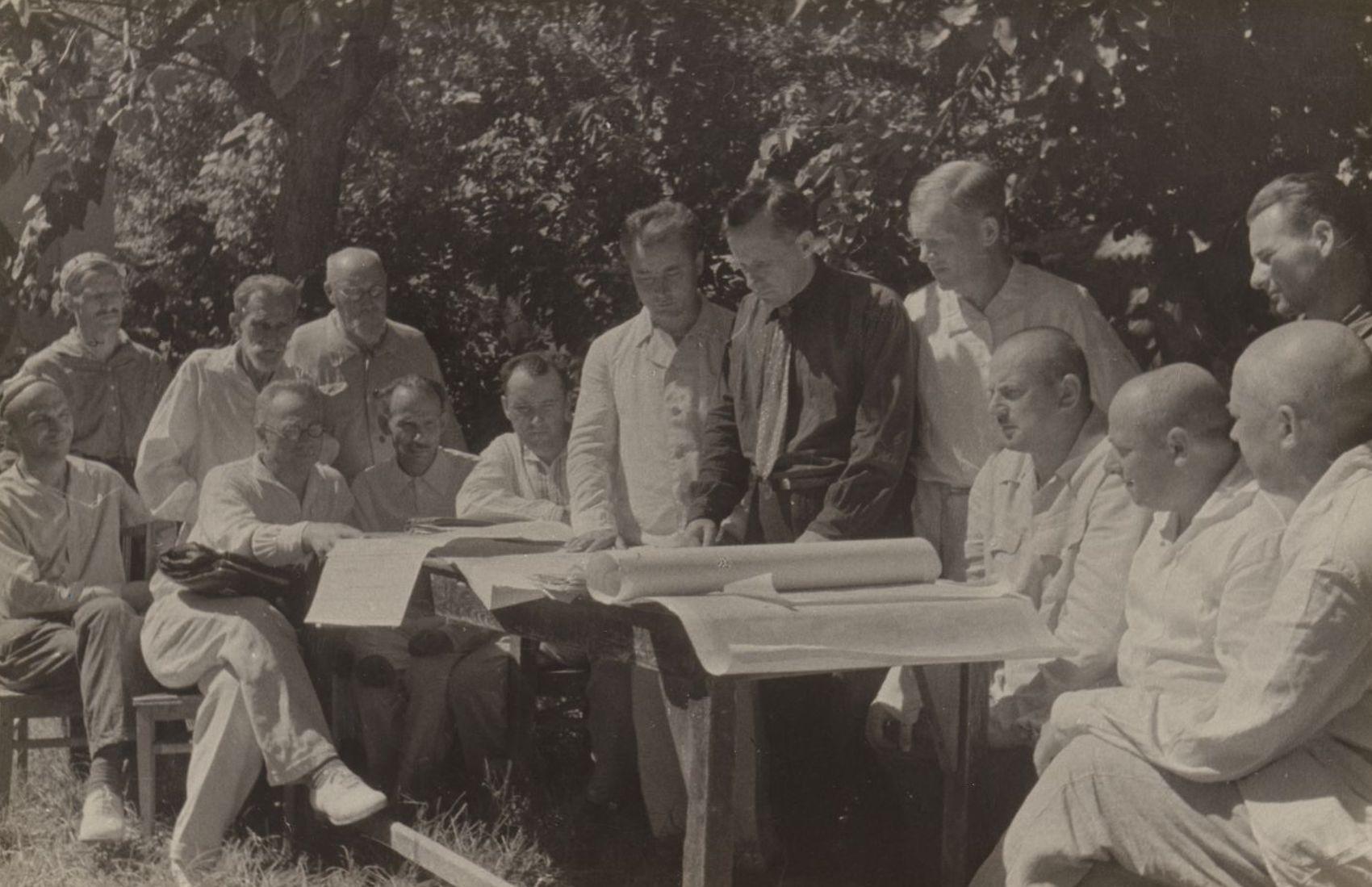
Album caption reads: “The Scientific-Technical Council of the GFC gathered during the construction of the canal. The Council was comprised of: People’s Commissar of Agriculture of the Uzbek SSR Azizov; author of the design engineer Lebedev; lead engineer Korzhavin; professors Askochenskii, Poslavskii, Ianishevskii; senior irrigation specialists of Uzbekistan, engineers Siniavskii, Kazakov, Rabinovich; and other prominent specialists.” Aleksandr Askochenskii, to whom this album was originally presented, is shown seated, fourth from left.
The Great Fergana Canal ushered in a new era of building in Central Asia that relied on ‘people’s construction’ to create water infrastructure. The album provides valuable insight into how the Soviet Union wished to portray what labor, the environment, and modernity should look like under socialism.
The Soviet press depicted the Great Fergana Canal as a grassroots effort by the local population to improve their standard of living in the spirit of socialist progress. Reports about the construction emphasized how only in the Soviet Union could Central Asians achieve what they could not in centuries prior under local autocrats and Russian imperialism—access to water. The photos depict the capacity of average Soviet citizens for transformative action under the guidance of officials from the Communist Party and experts from Moscow.
In Pipe Dreams: Water and Empire in Central Asia's Aral Sea Basin, historian Maya Peterson described this narrative as defining a new type of Soviet labor. Through this “free, conscious, socialist labor,” workers gained a sense of purpose that separated them from the alienated workers of capitalist societies. People’s construction, in the official Soviet account of it, allowed workers to build their own liberation so that modernity was delivered not only in the existence of the canal, but in its creation, too.
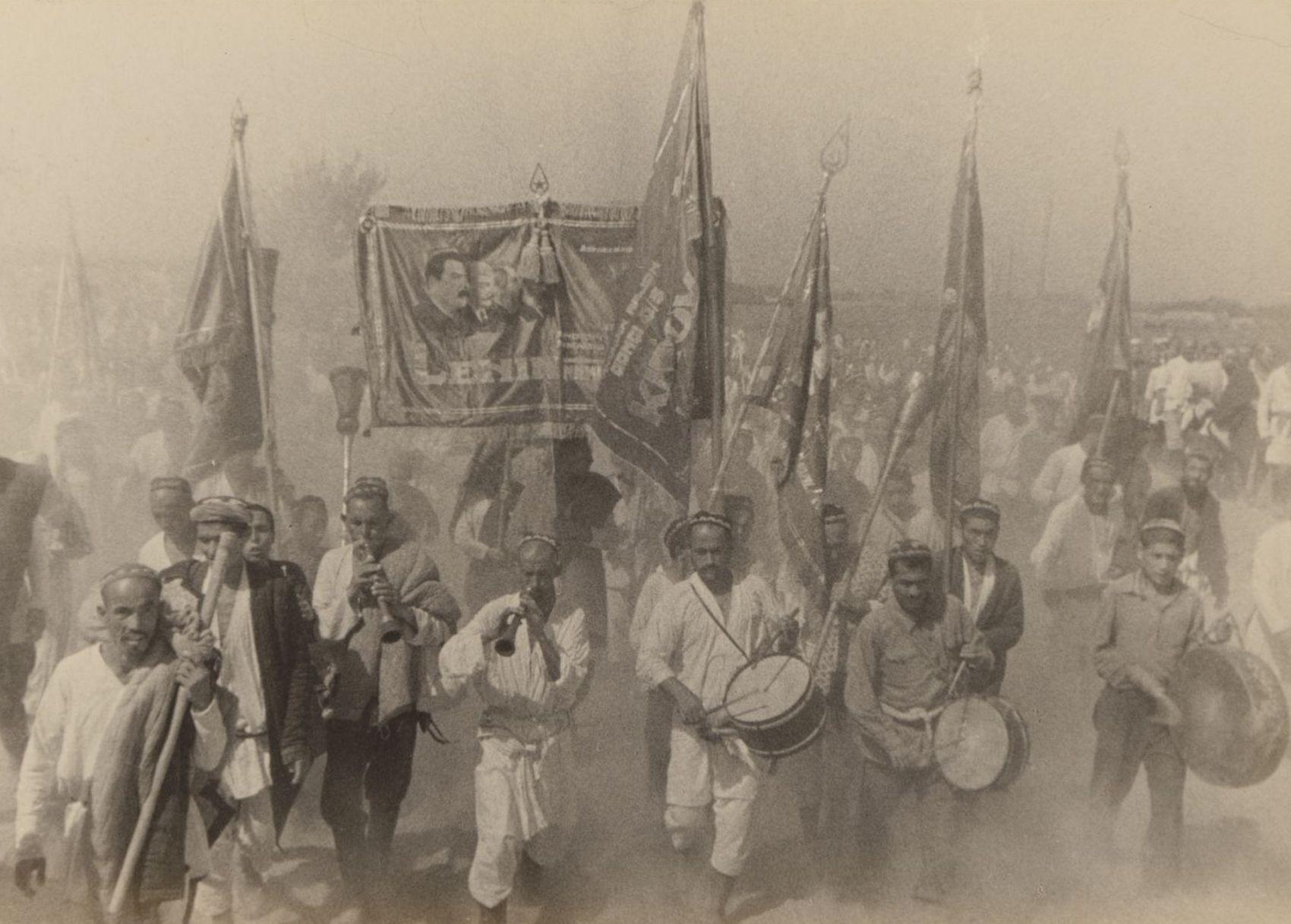
“The collective farms came out of villages with banners…” The album underscores the supposed jubilance of the collective farm workers as they march out to join the construction effort.

“Special trains were waiting for the collective farmers at the stations…”

"Having arrived at the highway, the collective farms hurried to occupy the plots assigned to them.”
Of course, the reality of the Fergana Canal’s construction was more top-down and coercive than described in the Soviet media. This type of mass mobilization was likely only possible because of the Soviet Union’s collective farm system: the kolkhozy provided a workforce that could be recruited without payment beyond their existing farm salary. In her book Imperial Desert Dreams: Cotton Growing and Irrigation in Central Asia, 1860-1991, Julia Obertreis describes a workforce that was composed of both forced and voluntary labor. Hundreds of prisoners from NKVD colonies were brought in to fulfill construction quotas. At the same time, Obertreis writes, many individuals took part in the project voluntarily and enthusiastically, as “participating in the construction of the [Great Fergana Canal] could help advance one’s career or strengthen one’s standing within the party.”

Album caption reads: “The Dusmatov movement spread like lightning along the canal…” The so-called Dusmatovtsy were especially productive ketmen wielders on the Canal. They were followers of the collective farm worker Dunan Dusmatov, who was awarded the Order of Lenin for extraordinary achievements on the Canal project.
The Soviet Union of this period was preoccupied with thrusting its peoples, and economy, into industrial modernity. Then why did this tractor-obsessed regime promote images of men digging the canal with traditional ketmen shovels? The answer is simple: to cut costs and reduce the need for overseas imports, the project used heavy machinery and explosives only where absolutely necessary, relying on manual labor for the rest.

"In the wild Uch-Kurgan steppe, the first strikes of the ketmen thundered."
Images of the workers often emphasize this mass manual labor, bodies in motion that fade against the dusty horizon. The photographs show the reality of working with hand-held tools, but the album also takes the opportunity to point out elements of modernity around the construction site: diesel-fueled tractors, canteens for workers, radio broadcasts, medical tents, and showers.
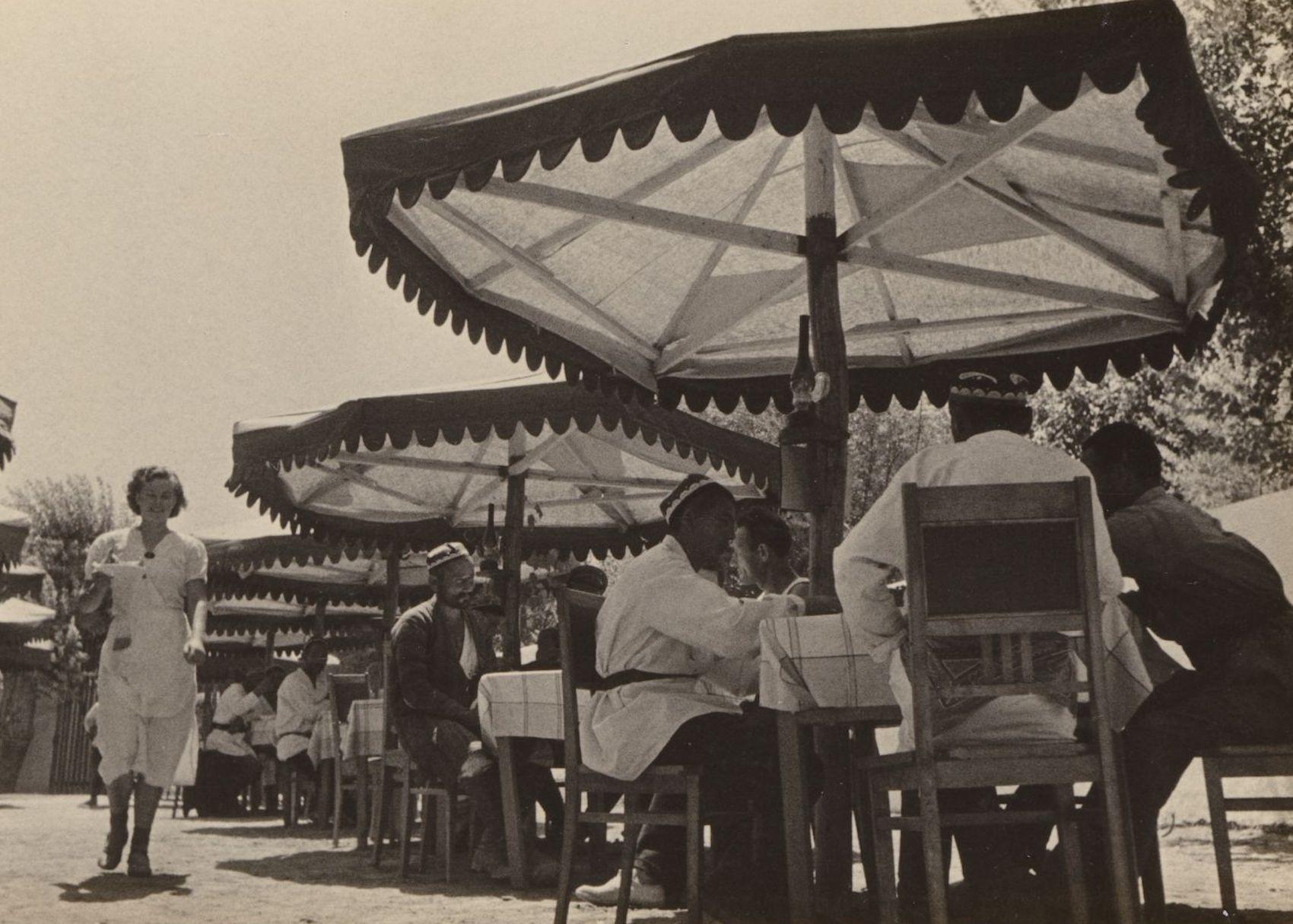
“Along the entire highway, in addition to the collective farm canteens, canteens for engineering and technical personnel were in operation.”
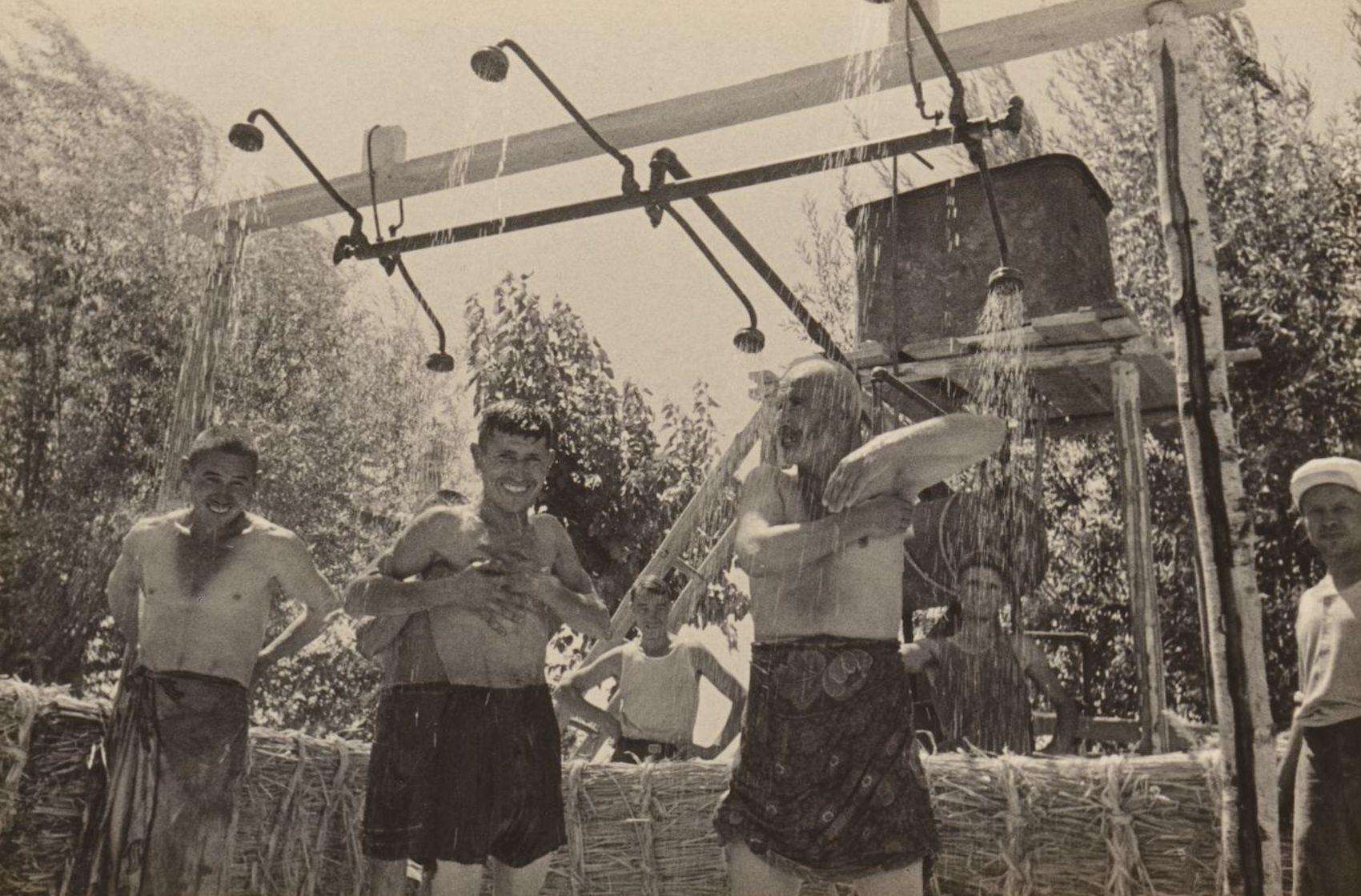
“After work, the collective farmers took showers.”
Where the state saved money by not paying workers and largely forgoing expensive technology, it reinvested in cultural production to further raise morale and political consciousness among laborers.
Peterson called this process a dual transformation of people and landscape. As workers reconstructed the waterways, political agitators tried to instill the values of socialism in those at the work site. This was done through broadcasting radio programs and setting up classrooms in tents. There was even a newspaper for the construction site published in Russian and Uzbek.
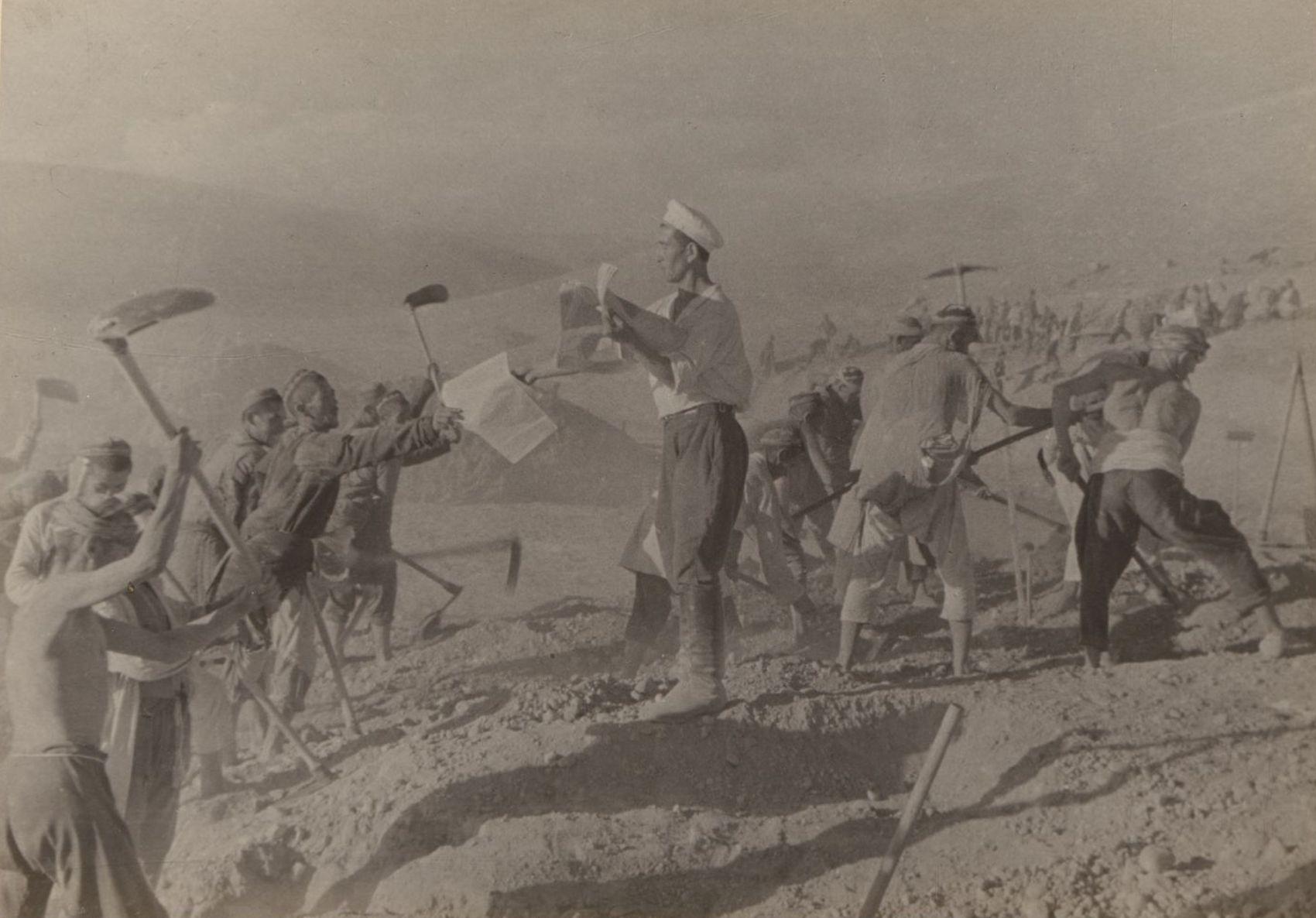
“Each day, fresh issues of the newspaper At the Stalinist construction site were distributed at all sites.”
The album’s depiction of culture at the construction site is a clear example of the policy known as “national in form, socialist in content.” Under this policy, Soviet culture could display local national (that is, ethnic) characteristics as long as its message was one that contributed to building the socialist future of the country. At the Canal, Uzbek national music and dance were performed to celebrate the project. These performative traditions, embodying local expressions of joy, were re-contextualized to bring pre-Soviet meaning and emotionality to the construction site, ultimately fusing the national and the socialist.

“The greatest masters of the arts were sent to the canal by the republic. The decorated People's Artist of the USSR Khalima Nasyrova sang songs for the collective farmers during their lunch break.”
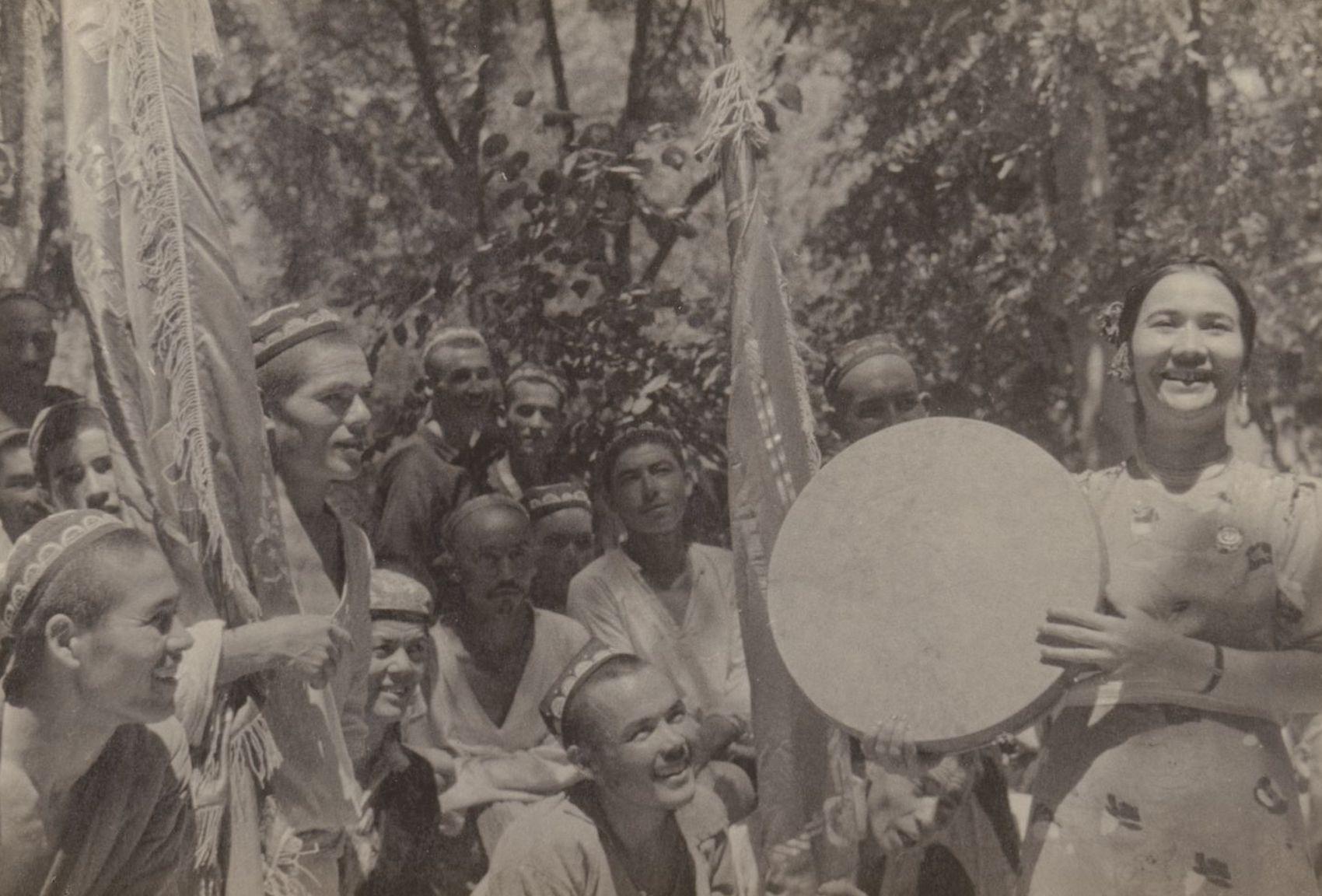
“The leader of the dutar ensemble, the honored and decorated artist Liutfi-Khanum Sarymsakova, performed with success.”
The Great Fergana Canal project fit into the Soviet ideology of humanity’s dominance over nature as a manifestation of modernity. Today, the devastating environmental effects of such water management policy stand in stark comparison to the joy expressed in the album’s photographs. Still-existing Soviet infrastructure in Central Asia has for decades diverted water away from the Aral Sea — once the fourth-largest lake in the world, now mostly desert. Water mismanagement and continued reliance on water-intensive crops like cotton will only worsen the effects of climate change in the region. Central Asia has already experienced serious droughts in the past years, and scientists predict the climate will continue to become hotter and drier.
These photographs tell a fascinating story about what it was like to alter the earth in Soviet Uzbekistan. The album shows us how the Soviet state wanted the Canal to be seen—as a triumph of socialist labor that would live on into the new millennium. But the story is, of course, incomplete. From the album alone we know little about how the project came to be. We can't learn about the lives or opinions of the workers who built the canal by hand, or how the canals would contribute to an ecological disaster. But it is these gaps that drive us down the path of further historical inquiry and scholarly research.
Bibliography
Obertreis, Julia. 2017. Imperial Desert Dreams : Cotton Growing and Irrigation in Central Asia, 1860-1991. Göttingen: V&R unipress.
Peterson, Maya K. 2019. Pipe Dreams : Water and Empire in Central Asia's Aral Sea Basin. Cambridge, United Kingdom ; New York, NY: Cambridge University Press.
Teichmann, Christian. 2007. “Canals, Cotton, and the Limits of de-Colonization in Soviet Uzbekistan, 1924-1941.” Central Asian Survey 26 (4): 499–519. https://doi.org/10.1080/02634930802018240.









